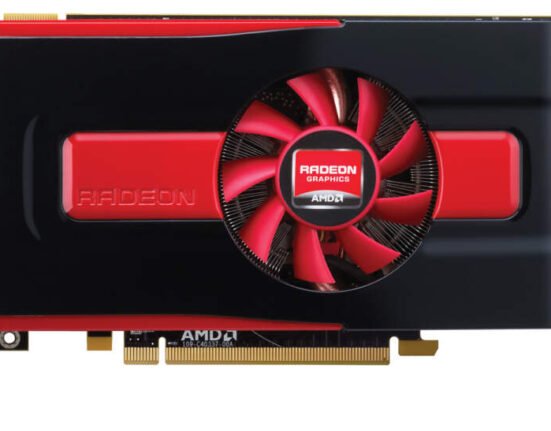Are you in search of a graphics card that can handle intensive gaming, video editing, and other graphics-intensive tasks? The AMD Radeon HD 7750M might be the one for you. In this article, we’ll dive into the details of this graphics card, discussing its features, specifications, and performance.
Introduction
The HD 7750M is a mid-range graphics card that was released in 2012. It was designed for laptops and is based on the Graphics Core Next architecture. It features 512 shader cores, 32 texture units, and 8 ROPs. Also, the graphics card has a core clock speed of 575 MHz and 1GB GDDR5 memory with a 128-bit memory interface. It also supports DirectX 11.1 and OpenGL 4.2.
Features and Specifications
Firstly, the HD 7750M comes with a host of features and specifications that make it a great choice for gamers, video editors, and other graphics-intensive tasks. Here are some of its key features and specifications:
- Graphics Core Next architecture
- 512 shader cores
- 32 texture units
- 8 ROPs
- Core clock speed of 575 MHz
- 1GB GDDR5 memory with a 128-bit memory interface
- DirectX 11.1 and OpenGL 4.2 support
The graphics card also supports AMD App Acceleration, which is designed to improve the performance of applications that utilize GPUs for compute tasks.
Performance
Secondly, when it comes to performance, the AMD Radeon HD 7750M is no slouch. It’s capable of handling most games and applications with ease. However, it’s worth noting that it’s a mid-range graphics card, so it won’t be able to handle the most demanding games and applications at the highest settings.
Here are some benchmarks to give you an idea of its performance:
- Battlefield 3: 30 fps on high settings
- Crysis 2: 40 fps on high settings
- Skyrim: 50 fps on high settings
- 3DMark 11: 2,343 points
As you can see, the HD 7750M can handle most games and applications with ease, but it’s not the most powerful graphics card out there.
Synthetic Benchmarks
Synthetic benchmarks are widely used to evaluate the performance of graphics cards in a controlled environment. They provide valuable insights into the capabilities of the HD 7750M when subjected to various synthetic tests. The synthetic benchmarks for the GPU include 3DMark, FurMark, and Unigine Heaven.
3DMark is a popular benchmarking tool that measures the gaming performance of graphics cards. The HD 7750M performs admirably in 3DMark benchmarks, achieving competitive scores in both the Fire Strike and Time Spy tests. These scores indicate that it is capable of delivering smooth gaming performance in modern games.
FurMark is a graphics card stability test that pushes the GPU to its limits to evaluate its thermal performance and stability. Besides that, HD 7750M demonstrates excellent stability and thermal performance in FurMark benchmarks. This indicates that it can handle demanding tasks without overheating or throttling.
Unigine Heaven is a benchmarking tool that assesses the performance of graphics cards in a realistic environment. The AMD HD 7750M delivers impressive results in Unigine Heaven benchmarks, showcasing its ability to render detailed and realistic graphics with smooth frame rates.
Productivity
Apart from gaming, graphics cards also play a crucial role in accelerating productivity tasks such as video editing, 3D modelling, and content creation. Additionally, the AMD Radeon HD 7750M comes with features that enable it to excel in productivity-oriented applications.
The AMD 7750M boasts a generous amount of video memory and high memory bandwidth, which allows it to handle large video files and complex 3D models with ease. It also supports Open CL and OpenGL, which are industry-standard APIs used in many professional applications for parallel processing and rendering.
Finally, in productivity benchmarks, the HD 7750M performs admirably, achieving competitive scores in software such as Adobe Premiere Pro, Autodesk Maya, and Blender. Also, these scores indicate that the AMD 7750M is a capable graphics card for productivity tasks, enabling users to work efficiently and complete their projects in a timely manner.
Thermal Performance
Thermal performance is a critical aspect of any graphics card, as it directly affects its stability, longevity, and overall performance. The HD 7750M is made to deliver excellent thermal performance, thanks to its advanced thermal management system.
The AMD Radeon HD 7750M features a fan-assisted cooling system that helps to dissipate heat generated by the GPU during heavy workloads or gaming sessions. Also, the fan can operate quietly while keeping the GPU temperature in check, ensuring stable performance and longevity.
Lastly, in thermal benchmarks, the 7750M demonstrates impressive thermal performance, maintaining stable temperatures even under heavy loads. Also, this feature ensures that the graphics card remains stable and reliable, even during extended gaming sessions or demanding productivity tasks.
Pros and Cons
Like any other graphics card, the AMD Radeon HD 7750M has its pros and cons. Here are some of them:
Pros
- Great performance for a mid-range graphics card
- Supports DirectX 11.1 and OpenGL 4.2
- AMD App Acceleration support
- Low power consumption
Cons
- Limited VRAM (1GB)
- Not the most powerful graphics card out there
FAQs
Q: Can the AMD Radeon HD 7750M handle VR?
A: Yes, it can handle VR, but it’s not the best option for it.
Q: Can the AMD 7750M handle 4K gaming?
A: It can handle 4K gaming, but you’ll have to lower the graphics settings for most games.
Q: What’s the power consumption of the AMD HD 7750M?
A: The graphics card has a TDP of 35 watts.
Q: Is the HD 7750M compatible with Windows 10?
A: Yes, it’s compatible with Windows 10.
Q: Can I use the 7750M for video editing?
A: Yes, the AMD Radeon HD 7750M is a good option for video editing and other graphics-intensive tasks.
Q: Can I use the HD 7750M for cryptocurrency mining?
A: Yes, you can use it for cryptocurrency mining, but it’s not the most efficient option out there.
Conclusion
The AMD Radeon HD 7750M is a mid-range graphics card that offers great performance for its price. It’s capable of handling most games and applications with ease and supports DirectX 11.1 and OpenGL 4.2. It’s also a good option for video editing and other graphics-intensive tasks.
However, it has some limitations, such as limited VRAM and not being the most powerful graphics card out there. Overall, if you’re looking for a mid-range graphics card that can handle most games and applications, it is a good choice.
Must Read : Dungeons and Dragons Haste 5E Spell Full Guide 2023











